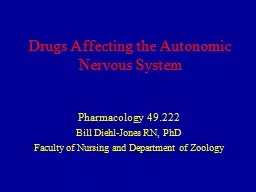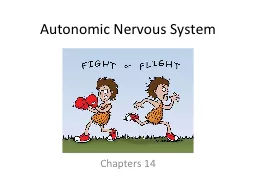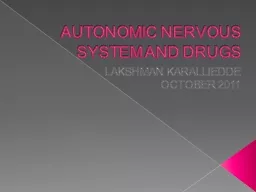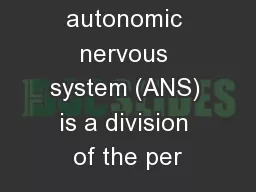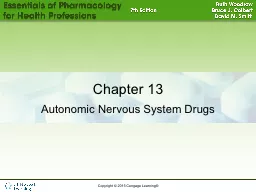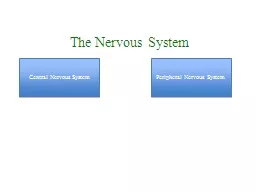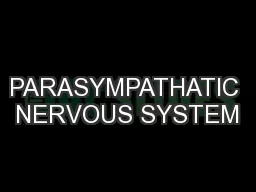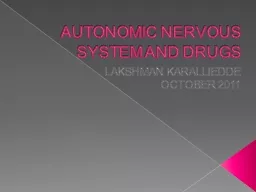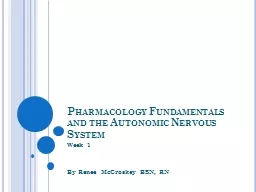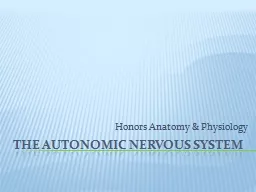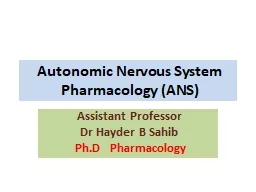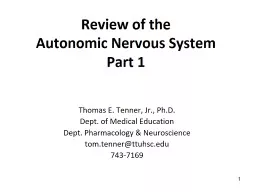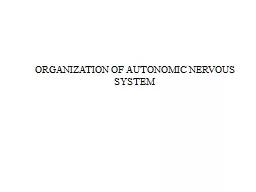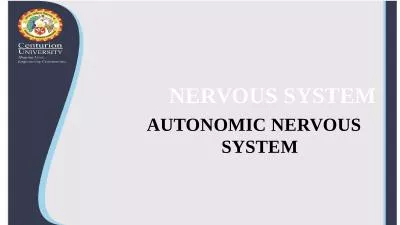PPT-Drugs Affecting the Autonomic Nervous System
Author : olivia-moreira | Published Date : 2016-11-28
Pharmacology 49222 Bill DiehlJones RN PhD Faculty of Nursing and Department of Zoology Agenda A Zen Review Overview of CNS and ANS Neurotransmitters and 2 nd Messengers
Presentation Embed Code
Download Presentation
Download Presentation The PPT/PDF document "Drugs Affecting the Autonomic Nervous Sy..." is the property of its rightful owner. Permission is granted to download and print the materials on this website for personal, non-commercial use only, and to display it on your personal computer provided you do not modify the materials and that you retain all copyright notices contained in the materials. By downloading content from our website, you accept the terms of this agreement.
Drugs Affecting the Autonomic Nervous System: Transcript
Download Rules Of Document
"Drugs Affecting the Autonomic Nervous System"The content belongs to its owner. You may download and print it for personal use, without modification, and keep all copyright notices. By downloading, you agree to these terms.
Related Documents

